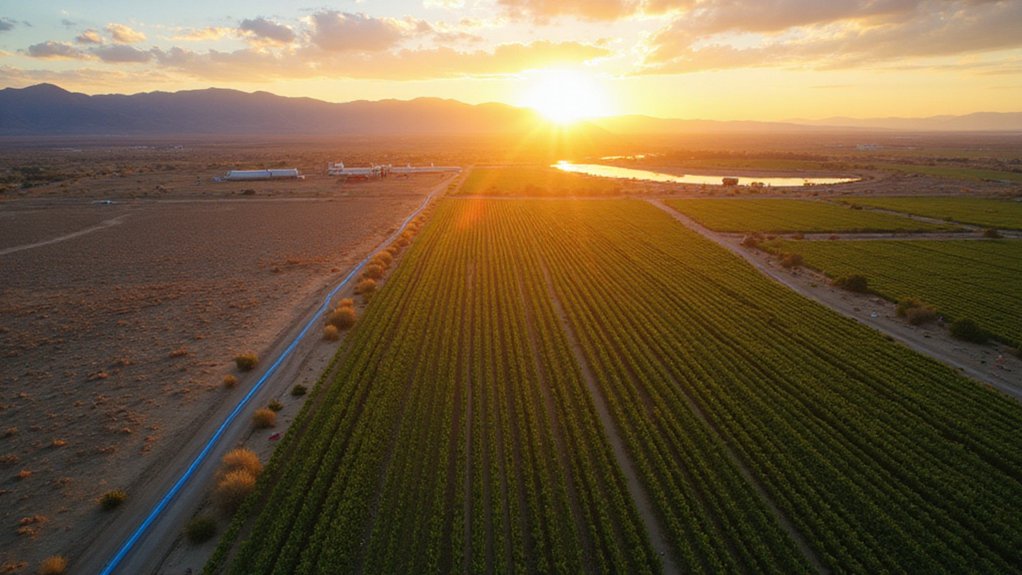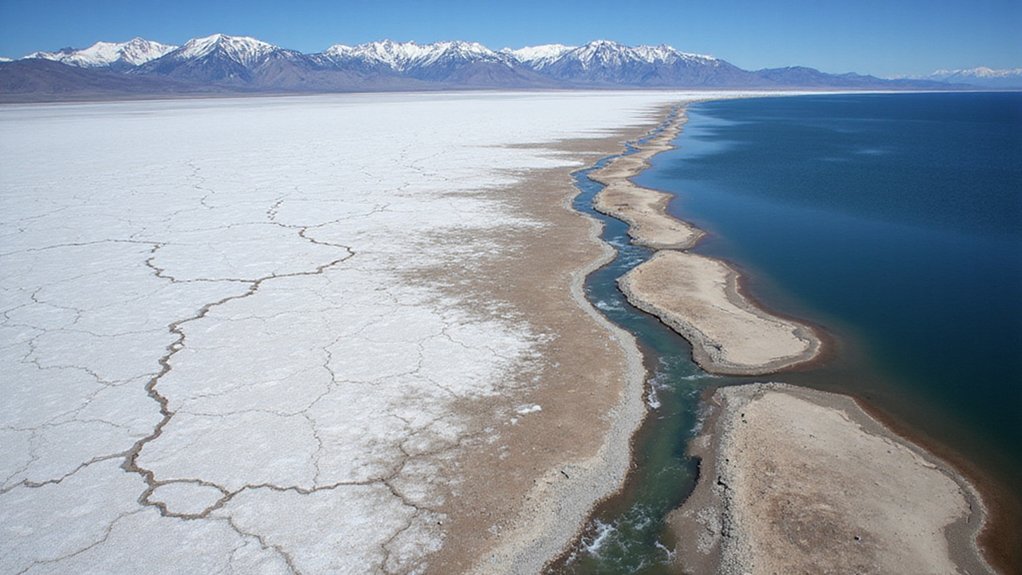California’s agricultural transformation transformed parched land into productive farmland through innovative water management. From Native American practices to Spanish missions and the Gold Rush boom, California evolved from food importer to agricultural giant. The development of irrigation systems in the late 1800s allowed farmers to shift from ranching to crop production. Water banking systems now store excess water in underground aquifers. These water innovations continue to shape California’s farming landscape amid ongoing climate challenges.
Seeds of change transformed California’s landscape over centuries, creating one of the world’s most productive agricultural regions. Native Americans practiced sustainable farming for thousands of years before European settlers arrived. When Spanish missions were established in the late 18th century, they introduced European crops and farming methods that altered the land forever.
The mission system ended in 1834 when the Mexican government distributed lands to private owners. Ranchos became California’s first widespread agricultural industry, focusing mainly on raising livestock. During this period, the indigenous population declined dramatically, falling by half to about 150,000 people.
Everything changed with the Gold Rush in the late 1840s. The sudden population boom created huge demand for food. At first, California relied on imports from Australia, Chile, and Hawaii. Soon, vegetable farming expanded to feed hungry miners. Without irrigation, though, large-scale farming wasn’t possible in much of the state.
The Gold Rush transformed California’s food landscape, turning a region dependent on imports into an agricultural powerhouse through innovation and necessity.
By 1899, irrigation systems watered 12% of California’s improved farmland, allowing agriculture to thrive. The landscape shifted from ranching to crop production, with wheat and barley becoming major exports. The “No-Fence Law” of 1874 marked this shift by requiring ranchers to fence their animals in, rather than farmers fencing cattle out.
Years of growing only wheat and barley depleted the soil. Farmers turned to fruit cultivation as a solution. Luther Burbank, who moved to Santa Rosa in 1875, developed many new plant varieties that helped the fruit industry expand. The ongoing climate change impact has exacerbated challenges for California agriculture, with prolonged droughts and warming temperatures creating drier conditions that increase wildfire risks. From the mid-1800s to the late 1920s, the number of farms in California increased by 700%. The completion of the Transcontinental Railroad in 1869 transformed the agricultural landscape by connecting California farmers to national markets.
Water management proved essential to this agricultural transformation. Large water projects made formerly arid lands productive. The development of water banking systems allowed farmers to store excess water in underground aquifers for future use. Farmers developed innovative irrigation techniques to use limited water efficiently. During droughts, groundwater pumping increased dramatically.
Farm labor also evolved. In 1885, the first fruit marketing cooperative formed. Indigenous people often worked as ranch laborers on their ancestral lands. Agricultural unions emerged to improve working conditions, gaining significant momentum in the 1960s and shaping modern farming practices.









